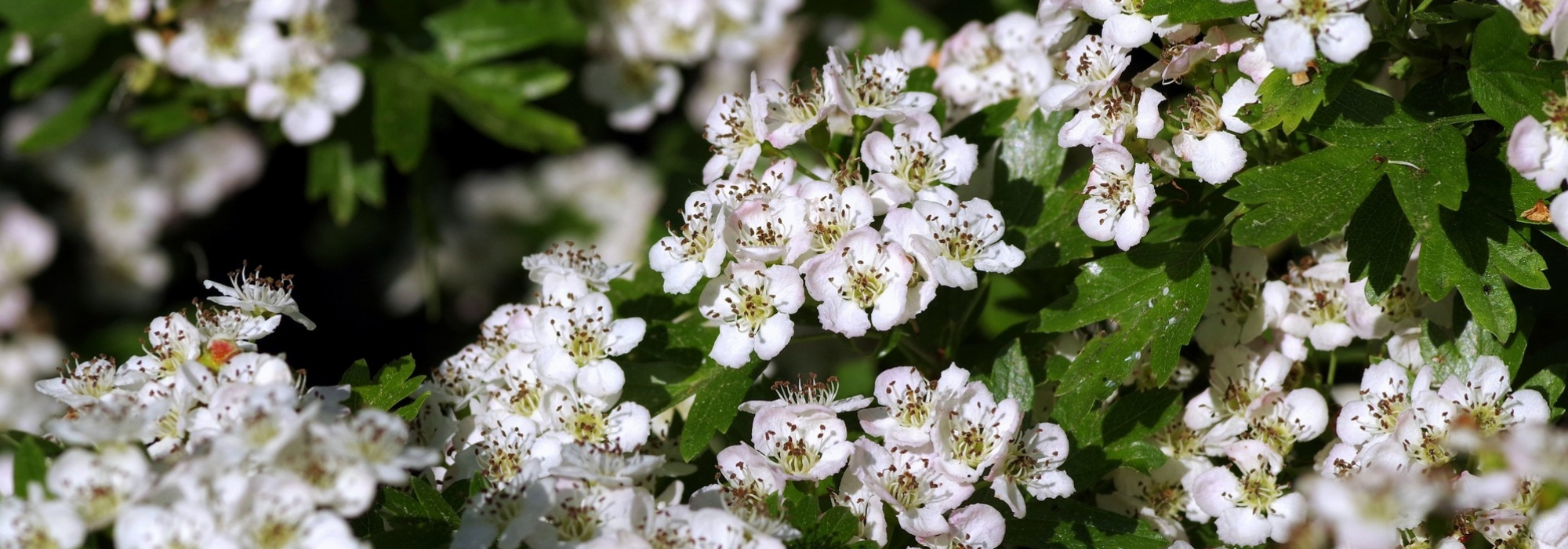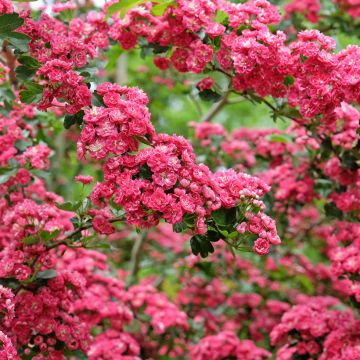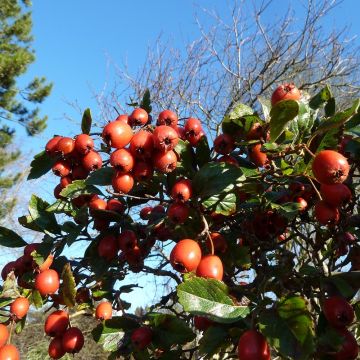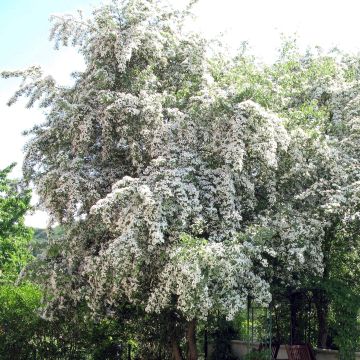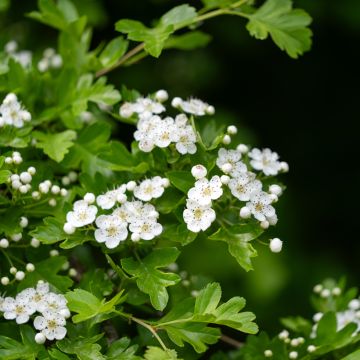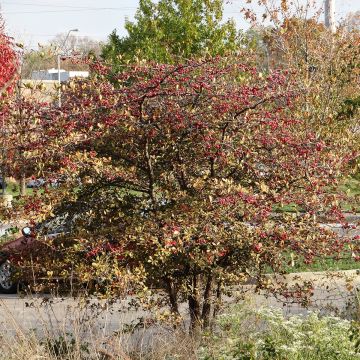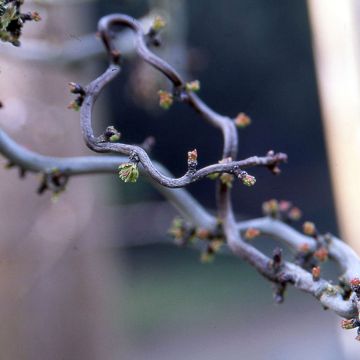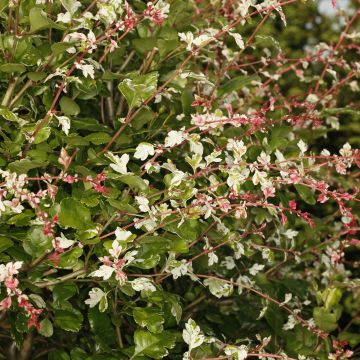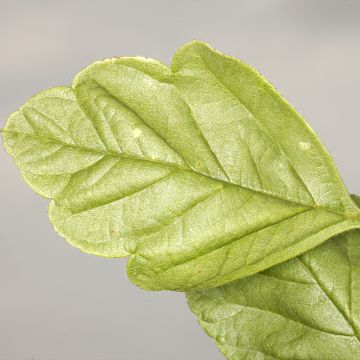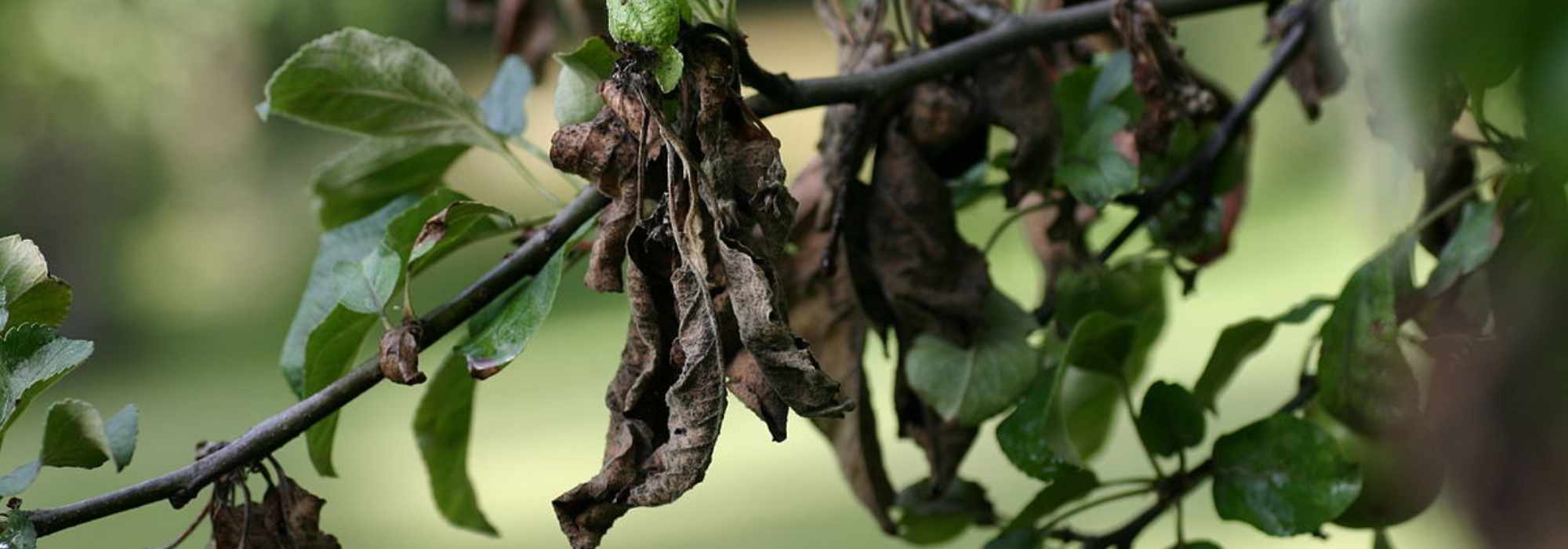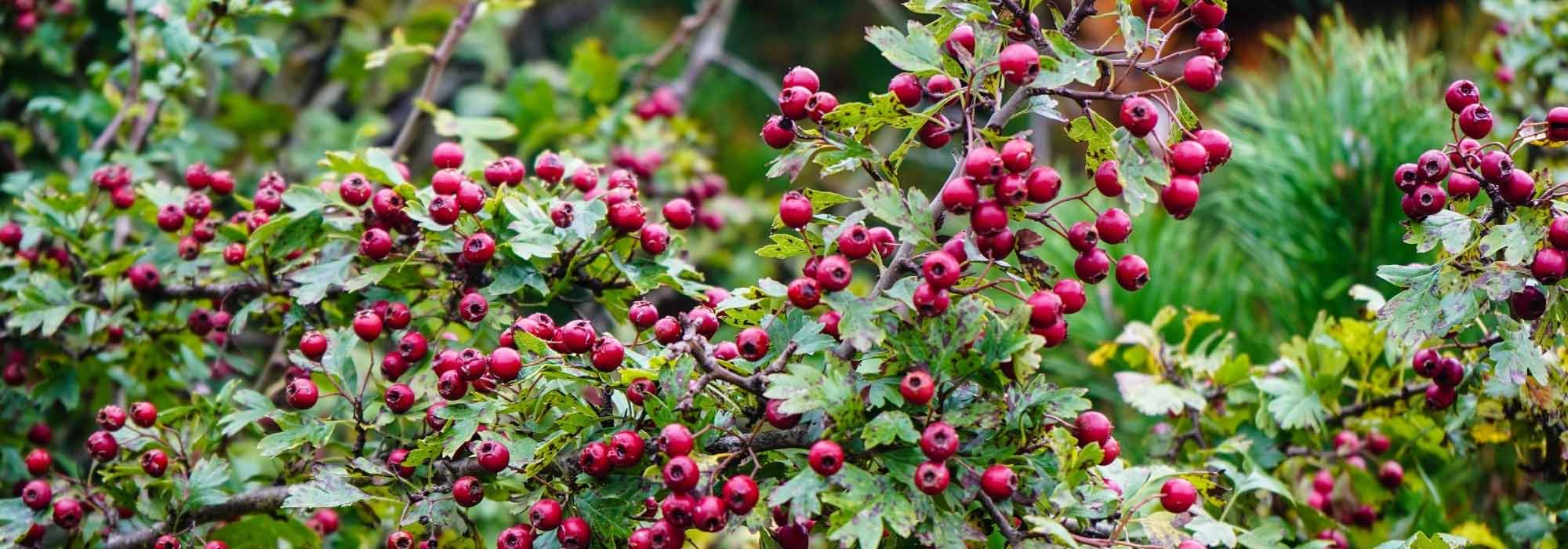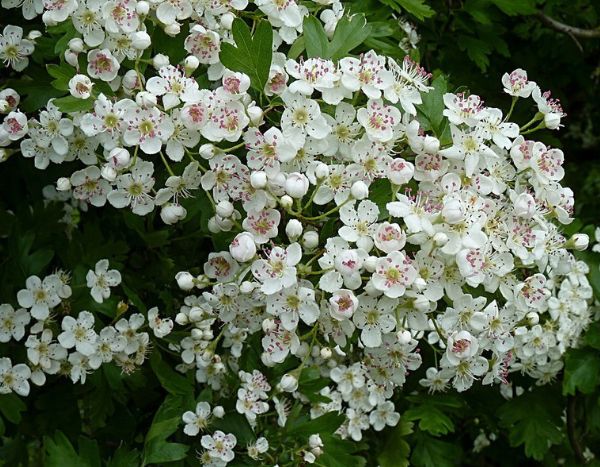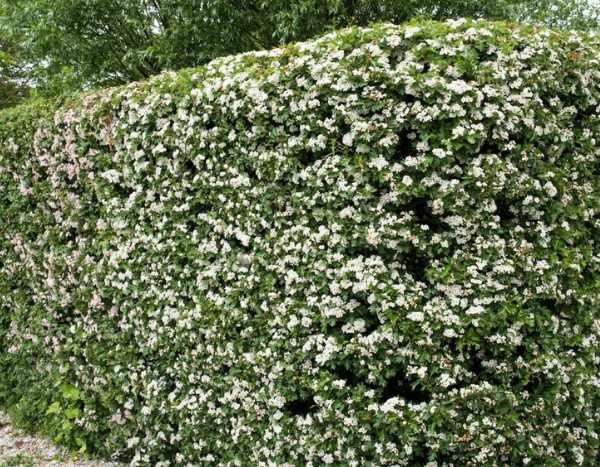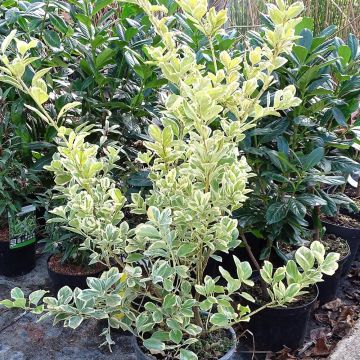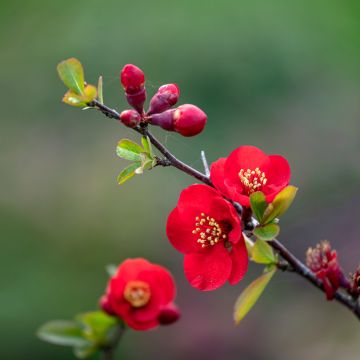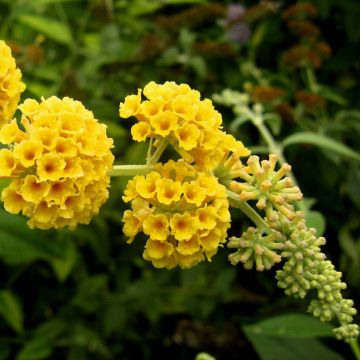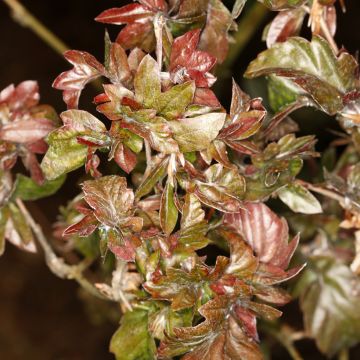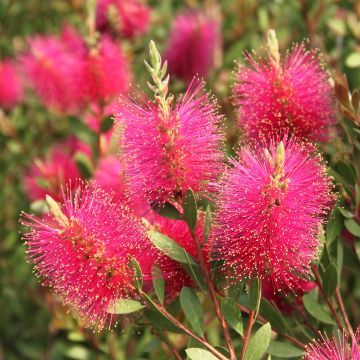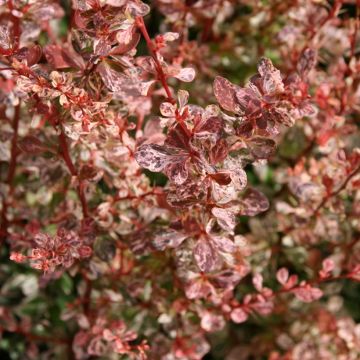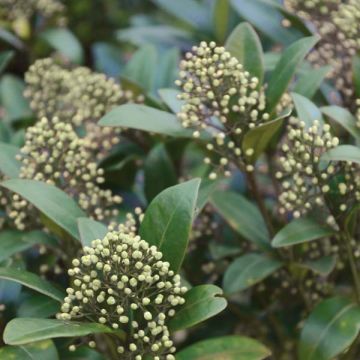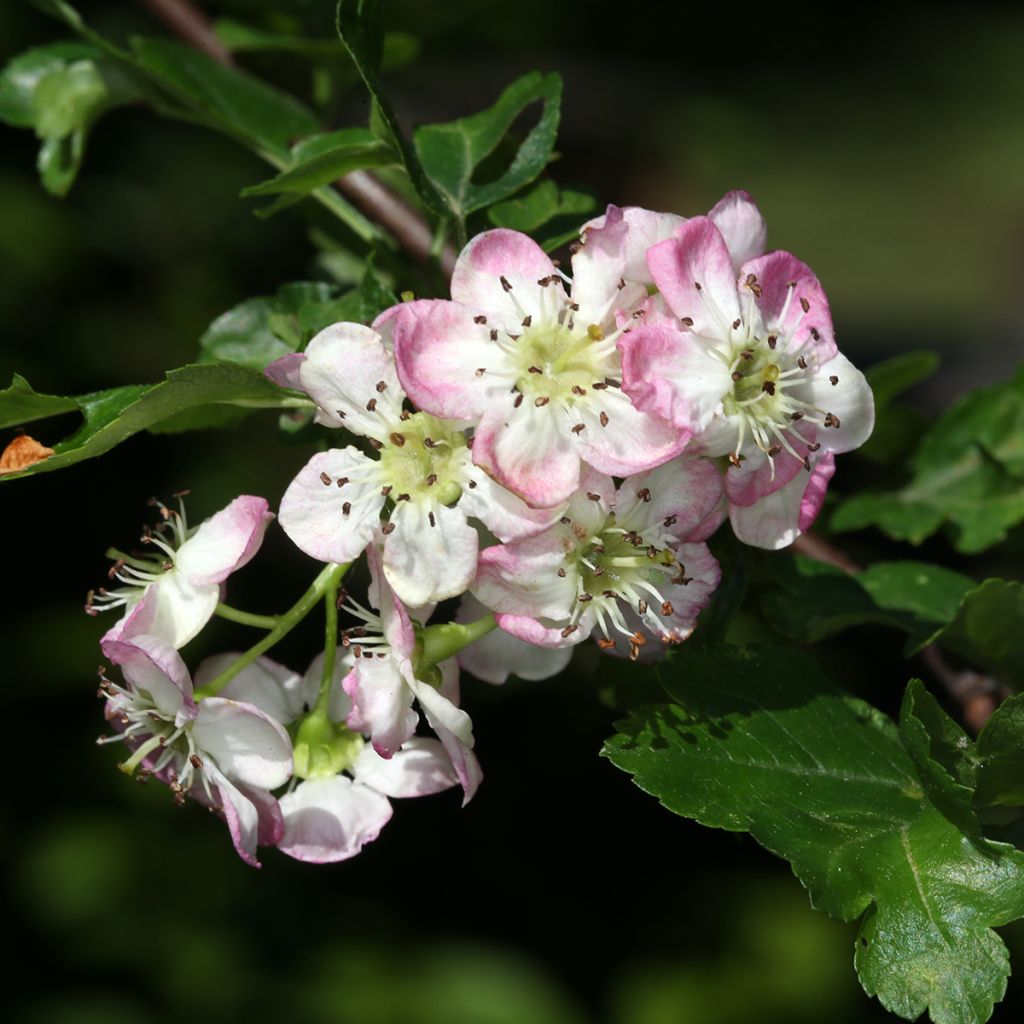

Crataegus monogyna Versicolor
Crataegus monogyna Versicolor
Crataegus monogyna Versicolor
Hawthorn, Common Hawthorn, Single-seeded Hawthorn, Mayflower, Quickthorn
Very beautiful young hawthorn plant, hoping it grows quickly and well. Thank you all.
Nath44, 08/10/2025
Special offer!
Receive a €20 voucher for any order over €90 (excluding delivery costs, credit notes, and plastic-free options)!
1- Add your favorite plants to your cart.
2- Once you have reached €90, confirm your order (you can even choose the delivery date!).
3- As soon as your order is shipped, you will receive an email containing your voucher code, valid for 3 months (90 days).
Your voucher is unique and can only be used once, for any order with a minimum value of €20, excluding delivery costs.
Can be combined with other current offers, non-divisible and non-refundable.
Home or relay delivery (depending on size and destination)
Schedule delivery date,
and select date in basket
This plant carries a 24 months recovery warranty
More information
We guarantee the quality of our plants for a full growing cycle, and will replace at our expense any plant that fails to recover under normal climatic and planting conditions.
Would this plant suit my garden?
Set up your Plantfit profile →
Description
The Crataegus monogyna 'Versicolor' is a form of our wild hawthorn that stands out with its pretty flowers combining pink and white. This white thorn also produces small red fruits that will persist until winter to the delight of birds. It is a very hardy and undemanding thorny tree that has its place in a country or defensive hedge.
The Crataegus monogyna, known as the common hawthorn, single-style hawthorn or white thorn, is a species native to central and southern Europe where it grows in deciduous or mixed forests, in clearings, on the edge or even in open terrain (meadow). This ornamental plant is ideal for hedges. It belongs to the Rosaceae family, just like the wild rose and the plum tree. It is a thorny shrub with a long lifespan and very hard wood.
The 'Versicolor' form has been selected for the charm of its flowering in pink and white tones. Of medium growth, this hawthorn forms a small tree or a large shrub, reaching 3 to 4 m in height with a spread of 2 to 3 m. Its habit is globose to oval. When young, the bark of the branches is smooth, brownish-red in color, as it ages, it becomes scaly and darker. The plant produces thorny branches. The leaves and flowers appear almost simultaneously, between May and June. Its deciduous foliage is alternate, composed of simple, ovate leaves, 2 to 5 cm long, with 3, 5 or 7 toothed lobes. They are a dark green color in summer, taking on more orange or reddish autumnal shades. Its fragrant single flowers are grouped in small clusters of 6 to 12 flowers measuring 10 to 20 mm in diameter. The flower corollas consist of 5 rounded petals and numerous stamens with dark pink anthers, surrounding a single style enclosing an ovary that will produce a single seed. In September-October, the light red, shiny fruits, ovoid in shape, about 10 mm long and 5 to 8 mm in diameter, called haws, appear. They are inedible for humans, but highly appreciated by birds.
The Crataegus monogyna 'Versicolor' is a very robust shrub that can withstand temperatures down to -30°C. It adapts to a wide range of soils if they are well-drained, but not too dry, even limestone soils. With its moderate growth, this shrub fits well in many gardens, as a hedge, in a shrub border, or even as a standalone specimen. Resistant to pollution and salt spray, it is a good candidate for urban or coastal gardens. In an ecological hedge, mix it with serviceberries, ornamental apple trees, cotoneasters, wild pear tree, quince tree, or European spindle, for example. This shrub will provide shelter and food for many insects, birds, and small mammals.
Plant habit
Flowering
Foliage
Botanical data
Crataegus
monogyna
Versicolor
Rosaceae
Hawthorn, Common Hawthorn, Single-seeded Hawthorn, Mayflower, Quickthorn
Cultivar or hybrid
Other Hawthorn Crataegus
View all →Planting and care
The Crataegus monogyna Versicolor is preferably cultivated in autumn in any well-drained soil, even limestone, in a sunny or semi-shaded location. It only fears excessively dry climates, so plant it in a dry and warm soil, especially well-drained.
Hawthorn can be affected by caterpillars, aphids, rot, rust, and powdery mildew. It is particularly sensitive to fire blight, which can be an obstacle to planting it near apple and pear orchards.
Not demanding, it will be satisfied with a balancing pruning. In May (after flowering) or in January-February, prune by removing rebellious or tangled stems that compromise the tree's good habit. Trim long branches to maintain a harmonious habit.
Planting period
Intended location
Care
Planting & care advice
-
, onOrder confirmed
Reply from on Promesse de fleurs
Similar products
Haven't found what you were looking for?
Hardiness is the lowest winter temperature a plant can endure without suffering serious damage or even dying. However, hardiness is affected by location (a sheltered area, such as a patio), protection (winter cover) and soil type (hardiness is improved by well-drained soil).

Photo Sharing Terms & Conditions
In order to encourage gardeners to interact and share their experiences, Promesse de fleurs offers various media enabling content to be uploaded onto its Site - in particular via the ‘Photo sharing’ module.
The User agrees to refrain from:
- Posting any content that is illegal, prejudicial, insulting, racist, inciteful to hatred, revisionist, contrary to public decency, that infringes on privacy or on the privacy rights of third parties, in particular the publicity rights of persons and goods, intellectual property rights, or the right to privacy.
- Submitting content on behalf of a third party;
- Impersonate the identity of a third party and/or publish any personal information about a third party;
In general, the User undertakes to refrain from any unethical behaviour.
All Content (in particular text, comments, files, images, photos, videos, creative works, etc.), which may be subject to property or intellectual property rights, image or other private rights, shall remain the property of the User, subject to the limited rights granted by the terms of the licence granted by Promesse de fleurs as stated below. Users are at liberty to publish or not to publish such Content on the Site, notably via the ‘Photo Sharing’ facility, and accept that this Content shall be made public and freely accessible, notably on the Internet.
Users further acknowledge, undertake to have ,and guarantee that they hold all necessary rights and permissions to publish such material on the Site, in particular with regard to the legislation in force pertaining to any privacy, property, intellectual property, image, or contractual rights, or rights of any other nature. By publishing such Content on the Site, Users acknowledge accepting full liability as publishers of the Content within the meaning of the law, and grant Promesse de fleurs, free of charge, an inclusive, worldwide licence for the said Content for the entire duration of its publication, including all reproduction, representation, up/downloading, displaying, performing, transmission, and storage rights.
Users also grant permission for their name to be linked to the Content and accept that this link may not always be made available.
By engaging in posting material, Users consent to their Content becoming automatically accessible on the Internet, in particular on other sites and/or blogs and/or web pages of the Promesse de fleurs site, including in particular social pages and the Promesse de fleurs catalogue.
Users may secure the removal of entrusted content free of charge by issuing a simple request via our contact form.
The flowering period indicated on our website applies to countries and regions located in USDA zone 8 (France, the United Kingdom, Ireland, the Netherlands, etc.)
It will vary according to where you live:
- In zones 9 to 10 (Italy, Spain, Greece, etc.), flowering will occur about 2 to 4 weeks earlier.
- In zones 6 to 7 (Germany, Poland, Slovenia, and lower mountainous regions), flowering will be delayed by 2 to 3 weeks.
- In zone 5 (Central Europe, Scandinavia), blooming will be delayed by 3 to 5 weeks.
In temperate climates, pruning of spring-flowering shrubs (forsythia, spireas, etc.) should be done just after flowering.
Pruning of summer-flowering shrubs (Indian Lilac, Perovskia, etc.) can be done in winter or spring.
In cold regions as well as with frost-sensitive plants, avoid pruning too early when severe frosts may still occur.
The planting period indicated on our website applies to countries and regions located in USDA zone 8 (France, United Kingdom, Ireland, Netherlands).
It will vary according to where you live:
- In Mediterranean zones (Marseille, Madrid, Milan, etc.), autumn and winter are the best planting periods.
- In continental zones (Strasbourg, Munich, Vienna, etc.), delay planting by 2 to 3 weeks in spring and bring it forward by 2 to 4 weeks in autumn.
- In mountainous regions (the Alps, Pyrenees, Carpathians, etc.), it is best to plant in late spring (May-June) or late summer (August-September).
The harvesting period indicated on our website applies to countries and regions in USDA zone 8 (France, England, Ireland, the Netherlands).
In colder areas (Scandinavia, Poland, Austria...) fruit and vegetable harvests are likely to be delayed by 3-4 weeks.
In warmer areas (Italy, Spain, Greece, etc.), harvesting will probably take place earlier, depending on weather conditions.
The sowing periods indicated on our website apply to countries and regions within USDA Zone 8 (France, UK, Ireland, Netherlands).
In colder areas (Scandinavia, Poland, Austria...), delay any outdoor sowing by 3-4 weeks, or sow under glass.
In warmer climes (Italy, Spain, Greece, etc.), bring outdoor sowing forward by a few weeks.






























